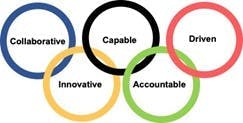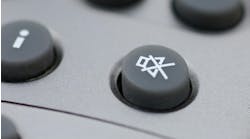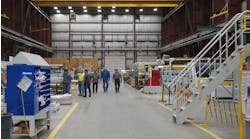When Is Teamwork Transformative, and When Does It Just Sap Energy?
Everyone is telling leaders that they need to build teams. Top-selling business authors, Harvard Business Review, sports pundits and HR partners are among them. But our question is, what does teamwork mean? In fact, we think that much of teamwork, as espoused and often practiced, is a dangerous mythology.
Many leaders assume that their direct reports constitute a team, then schedule a regular staff meeting. So often these meetings just sap energy and time as each function head is asked to report on their updates while others tend to tune out, literally turning off the video and muting during remote meetings. The inherent self-advancing bias of this meeting agenda along with the competition for approval works against teamwork.
To become a high-performing team, the leader will want to make the distinction between the role of team members leading their function—or “silo” to use that dirty word—and their role of participating in the shared work of the team. Both are important. And while there is a real need for “show-and-tell” sessions to keep everyone informed of the progress of the company within each function, these should be limited to provide time for the more engaging and more value-creating shared work.
The idea of having to wear these two hats is not novel. The problem comes from the confusion of not knowing what wearing each hat means. It is the leader’s job to make this clear. Are we asking team members to oversee each other’s work? Are we asking them to attend each other’s staff meetings? This would take gobs of time, suck cerebral horsepower and likely irritate colleagues. Where is the value added from that?
What makes a team is not the organizational structure, but shared work. It comes in the following four flavors:
1. Shared tasks
2. Interdependencies
3. A shared mission
4. Collaborative behaviors
Shared Tasks:
Contrast going around the room listening to report-outs from disparate functions with the experience of being tasked to address a collective challenge, to produce something new and valuable—something that requires the intelligence and cooperation of your colleagues to succeed.
For example:
- Producing a competitive product roadmap to deliver to the board for approval
- Proposing the future-state organization structure to reflect the needs of the business
- Identifying the impact of emerging changes in customers’ interests, disruptive technologies and competitors’ offerings
- Determining the company’s policy on remote, flex and on-site work requirements based on the business needs and employee preferences.
- Identifying inefficiencies in key cross-functional processes and proposing changes to reduce time and cost while increasing quality.
When the agenda at the staff meeting turns from silo report-outs to shared and forward-looking tasks, the energy is transformed, and the power of the team is unleashed. This is not just an energetic change. This is how the team will make a transformative impact.
Interdependencies
For most organizations, it is a lack of teamwork that causes the most interpersonal frustration and financially costly pain. The Technology team wants to introduce a modernized tool offering a streamlined process, better user experience and enhanced security—but the Operations group doesn’t want to adopt it because it requires significant changes in how they process. They worry that the changes will likely irritate customers and their boss alike. The Sales and Product teams want to introduce competitive new features—but the Technology team doesn’t have the bandwidth to get to it and they are worried that they don’t have the skills to do so.
As these examples illustrate, a siloed mentality is most harmful when the delivery of products or services requires collaboration across functions. Actually, it’s not just mentality. It is a combination of tasking groups with competing priorities, siloed management process and turf mentality. Too often, we ask our people to demonstrate the “soft skills” of greater teamwork and collaboration but ignore the fact that we have set them up to behave as competitors by promoting functional achievement over shared goals.
Asking each functional head to report out on their progress is more likely to promote enmity than teamwork. Framing the work as shared, and reviewing progress and challenges as a joint responsibility, will bring the team together and send this message rippling down through the functions.
Shared Mission
While shared tasks and work requiring interdependencies are concrete, mission statements tend to be more conceptual in nature, although they don’t have to be (see Kennedy’s moonshot below). And yet, there is no doubt that the following corporate mission statements motivate the team to a shared aim and, as such, promote a shared identity and a source of camaraderie. Mission reminds us, especially when things get a little tough, that we are on the same team.
Tesla
To create the most compelling car company of the 21st century by driving the world’s transition to electric vehicles.
Nike
Create groundbreaking sports innovations, make our products sustainably, build a creative and diverse global team and make a positive impact in communities where we live and work.
IKEA
Offer a wide range of well-designed, functional home furnishing products at prices so low that as many people as possible will be able to afford them.
Amazon
We strive to offer our customers the lowest possible prices, the best available selection and the utmost convenience.
To organize the world’s information and make it universally accessible and useful.
John F. Kennedy’s Moonshot
“I believe that this nation should commit itself to achieving the goal, before this decade is out, of landing a man on the moon and returning him safely to the earth.”—May 25, 1961
Developing and writing a mission statement can itself be a shared task. In fact, the results are much better when it is shared. The trick is to get all the right players in the room at the same time. The more the merrier. One approach that works well is to first facilitate a discussion about the key events that have been and will be shaping the business. Ask participants to share their thoughts regarding customers, competitors, technology and even world events. Following this discussion, put the group into breakouts to draft some statements. At a later date, build on these to produce something that reflects the input of the whole group.
Helpful Behaviors
Do people behave like colleagues and collaborate when they experience shared work, or do people who behave like colleagues and collaborate make progress towards common aims? We believe you need both a culture of collaboration and progress with shared work.
Successful teams are explicit about how they need to “show up” to deliver successfully on their mission. Often, these expectations are implicit and unexamined, which means that everyone is doing their version of teamwork. Some default to their sole-operator comfort zone, others to competitors and self-promoters. Most adopt the unspoken prejudices and pigeonholing of the group.
This is another case where the development of explicit helpful behaviors is suited as a team task. Bring your group together and have a brainstorm around this question: “Given our mission, what would be the ideal characteristics of our team?.” When that conversation settles down, you will inevitably arrive at characteristics that can be sorted into a few categories, for example: Collaboration, Innovation, Capability, Accountability and Drive. Of course, you will arrive at your own, but it is telling how these show up over and over again.
And here you will have created your own version of something like the Olympic rings for the team to aim for. We like to think that the separate and connected rings are an apt illustration.
In Conclusion
It’s natural for leaders to assume that their direct reports constitute a team. A closer look tells us direct reports have two roles; one as function head, the other as collaborators in shared work. Leading with this distinction in mind—by illuminating the shared mission, shared tasks, interdependencies and behavioral expectations—will drive the kind of transformations needed to compete and win. Better still, it will energize the team with the experience of working in partnership with colleagues on meaningful work.
Based in the San Francisco Bay Area, Chris Morgan is an experienced and trusted executive coach. He is a partner at Morgan Alexander, and co-founder of Listentool, a real-time feedback software solution.
Marc Maltz is a partner at Hoola-Hoop LLC who brings over 40 years of experience advising for profit and nonprofit executives. Marc spent a number of years as an operating executive, is a limited partner, serves on boards and writes and lectures on organizational psychology. Marc resides in New York City.





